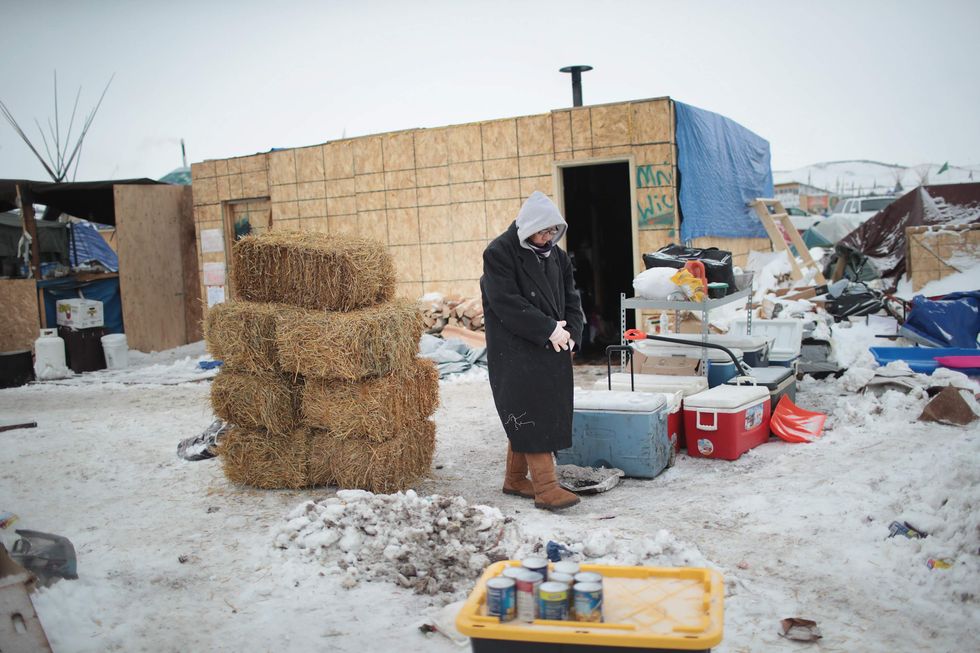
CANNON BALL, ND - DECEMBER 02: A Native American activist volunteers at Oceti Sakowin Camp on the edge of the Standing Rock Sioux Reservation on December 2, 2016 outside Cannon Ball, North Dakota. Native Americans and activists from around the country have been gathering at the camp for several months trying to halt the construction of the Dakota Access Pipeline. The proposed 1,172-mile-long pipeline would transport oil from the North Dakota Bakken region through South Dakota, Iowa and into Illinois. (Photo by Scott Olson/Getty Images)


